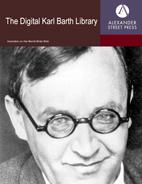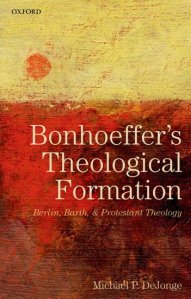Continuing my lenten blogging project, I now turn to Robert Jenson. For me, Jenson ranks among those theologians whose writings never fail to capture my attention, the sort whom I will read on any subject—whether or not I am particularly interested—just to see what he has to say on it. I should also say that probably no other writer produces in me such strong feelings of simultaneous agreement and doubt, inviting endorsement while demanding critique. For the present, I will try to leave both endorsement and criticism aside (although comments in either direction are welcome!), restricting myself to description and paraphrase.
The doctrine of God, for Jenson, begins with the divine identity, specifically the God identified by the biblical narrative. Throughout both testaments, God is identified by certain key events in time. Centrally, for Jenson, “God is whoever raised Jesus from the dead, having before raised Israel from Egypt” (Systematic Theology, 1:63 [hereafter: ST]). This way of identifying God more or less corresponds with Jenson’s summary of the gospel message: that the God of Israel has raised Jesus Christ from the dead. Thus, for Jenson, God’s identification by the events narrated in the biblical text is inextricably tied up with the content of the gospel itself.
Though this may seem like an innocuous and perhaps unremarkable observation, Jenson goes further, making a conceptual move “from the biblical God’s self-identification by events in time to his identification with those events” (ST 1:59). In other words, God is in himself who he is for us in history. Since historical events are the only means by which God has revealed himself, if God’s inner-being in eternity differs in content from God’s being-for-us in time, then we could never know God truly. “The revealing events would be our clues to God, but would not be God” (ST 1:59). And any concept of revelation as a divine pointer that is ultimately void of divine presence is what the Bible calls idolatry (ST 1:60).
Jenson thus operates with something very much like Rahner’s rule—that the immanent trinity is the economic trinity and vice versa—but with a particular emphasis on the way in which God is identified by narrative—not to mention an unflinching willingness to follow this rule to its logical conclusion. In Jenson’s view, “the doctrine of the Trinity is but a conceptually developed and sustained insistence that God himself is identified by and with the particular plotted sequence of events that make the narrative of Israel and her Christ” (ST 1:60). And he does not shy away from the implications of this statement. The eternal being of God is determined by the contingent history of God with God’s people, and specifically the history of Jesus Christ. This determination is, to be sure, God’s own self-determination to be the God he is. Yet if this eternal decision is a decision for a history with human beings, that is, to constitute his identity in relation to historical human creatures, then we cannot construe historical contingency as alien to the eternal being of God. When God makes promises on the twin bases of his past deeds (“I am the one who…”) and his revealed name (“I am the Lord”), God “explicitly puts his self-identity at narrative risk” (ST 1:65). God is in himself who he is to us in human history, not merely by reflecting his eternal being into history, but actually by allowing his actions in history to determine who he eternally is.
A Jensonian theology of Holy Saturday would thus require careful thought about how the historical event of Jesus Christ lying dead in the tomb identifies the biblical God—not just as an example of his character, but as his own historical and contingent basis of establishing his eternal identity. As Jenson says,
The crisis of the total biblical narrative is the Crucifixion. As the cry of dereliction laments, the one called “Father” here hands the one called “Son” over to oppositional and deadly creatures. Therewith it becomes problematic that anything specified by listing “Father, Son, and Holy Spirit” can be one God and not rather a mutually betraying pantheon. If the phrase can still be the name of one self-identical personal reality, his identity must be constituted precisely in the integration of this abandonment. The God of crucifixion and resurrection is one with himself in a moment of supreme dramatic self-transcendence or not at all. (ST 1:65)
Put briefly, “the gospel does not tell of work done by a God antecedently and otherwise determined, but itself determines who and what God is” (ST 1:165). To put it another way, God does not merely demonstrate who he is in history; he makes himself who he is.
For Jenson, there is no story behind the crucifixion that is somehow more “real” than the event itself. It does not conceal an invisible transaction between God and the devil or Father and Son, nor is it a historical mask worn over a mythic event. The crucifixion is “an event in God’s triune life” (ST 1:189), and it is so precisely as a human and historical event. Specifically, it is the event wherein God determines and establishes his relationship to fallen creatures, and as such determines and establishes fallen creatures’ relationship to him. It is important to note that Jenson refuses to view the cross apart from the resurrection. Consider the following:
The Crucifixion put it up to the Father: Would he stand to this alleged Son? To this candidate to be his own self-identifying Word? Would he be a God who, for example, hosts publicans and sinners, who justifies the ungodly? The Resurrection was the Father’s Yes. We may say: the Resurrection settled that the Crucifixion’s sort of God is indeed the one God; the Crucifixion settled what sort of God it is who establishes his deity by the Resurrection. (ST 1:189)
When God raises Jesus from the dead, he is saying of this crucified man, “Yes, that is who I am.” The three-day story of crucifixion, grave, and resurrection narrates the central drama in which God becomes who he eternally is. We might therefore say instead that in the act of raising Jesus from the dead, God says, “I will be who I will be, and that is who I will be.” That God says this of the crucified one must be cause for careful reflection; that God says this by means of resurrection must be cause for great rejoicing.






